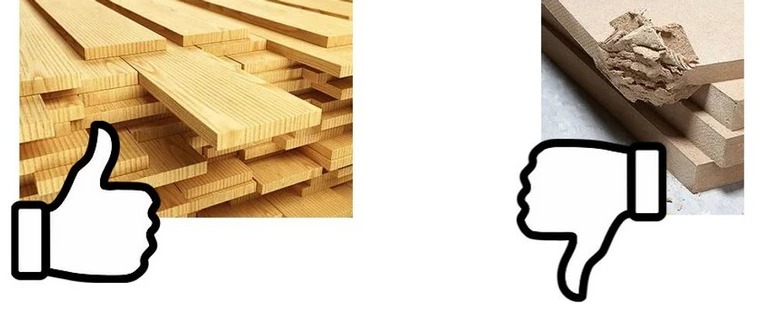You’ve probably heard about MDF, which is cheaper than solid wood but more impact-resistant. But how does it compare? Is it easier to cut? And how about staining? Read on to discover the pros and cons of both materials. You’ll know how to decide which is best for your project. Here are three of the biggest advantages of MDF. So, which is better? And why should you choose it?
MDF is less expensive than solid wood
There are a few advantages to choosing MDF over solid wood. Despite its lower cost, MDF is still stronger than solid wood. It’s made from recycled wood, including scraps. In addition, it’s more resistant to moisture, making it less likely to warp or split. And because it’s less expensive than solid wood, it’s easier to use in your project. However, it doesn’t come without disadvantages.
The price of MDF differs by thickness and uses, and the higher the grade, the more expensive it is. Thick MDF boards can cost up to 53 euro per board foot. On average, MDF costs less than half as much as solid wood, and this price difference makes it a great choice for budget-conscious homeowners. If you’re in need of a floor, you may want to choose a thicker MDF product than a thin one.
MDF is not as expensive as solid wood. It is an engineered wood product that mimics the look and feel of wood, including mahogany and elm. It is manufactured from sawdust or dried wood shavings that have been compressed, glued, and heated into panels. Compared to real wood, MDF is slightly stronger and more stable. You can also use MDF to create decorative panels, wall hangings, and other wood products.
MDF is more impact-resistant than solid wood
If you are in the market for new cabinets, you may be wondering whether MDF is more impact-resistant than solid-wood countertops. While both materials can be attractive and sturdy, solid wood is often more durable and impact-resistant. Its low moisture content makes it less likely to warp and break. However, if you are looking for a cost-effective material for your project, MDF may be the better choice.
While MDF is more impact-resistant than solid-wood countertops, it has a few significant disadvantages. This type of material is typically weaker than natural wood, and it does not retain screws or nails for long periods. It is also vulnerable to water, high temperatures, and daily wear. Compared to solid-wood countertops, MDF is more affordable and easy to work with. For these reasons, it is a better choice for kitchen cabinets.
The difference between MDF and solid wood is in their density. MDF is made of soft wood fibers, while HDF is made from hardwood fibers. HDF is stronger and more durable, but is heavier and more expensive than MDF. MDF is easier to cut, shape, and finish than HDF. It is also easier to paint and stain than HDF. The cost of HDF depends on your intended use for the material.
However, MDF isn’t water-resistant, and it tends to crumble when exposed to moisture. To prevent this from happening, you can paint MDF with a solvent-based primer before painting. You’ll need to be very careful while cutting MDF, because it can easily dull a saw blade’s blade. MDF is easier to work with than solid wood, so it’s a great choice for smaller projects and budget-conscious shoppers.
It is more durable
One obvious difference between MDF and Solid Wood is their durability. MDF can be repaired after it’s been damaged, whereas Solid Wood can’t be. It will expand and contract depending on its environment. When properly finished, MDF can last up to 10 years and even longer if it’s laminated. The downside of MDF is that it’s not very easy to repair. This is especially true if the wood is intricately detailed.
MDF is made from small timber chips and sawdust, and is significantly cheaper than Solid Wood. Because of this, MDF sheets are available in more than 100 different thicknesses, ranging from 2mm to 60mm. MDF’s lack of visible knots or grain makes it easy to paint. It’s also easier to stain or finish than Solid Wood, making it an excellent choice for many DIY projects.
MDF is weaker than Solid Wood, so you should be cautious when assembling your pieces. This material does not hold up well to excessive weight. Also, MDF is susceptible to splitting or chipping edges, which is why you should avoid putting MDF furniture in high-moisture areas. Solid Wood is also more expensive than MDF, so consider this factor before you purchase your furniture. You’ll save money, time, and aggravation if you choose to buy Solid Wood instead of MDF.

